Cove Ceiling: Adding Sophistication to Your Interior
Author: Rick Worst | Editor: Omar Alonso
Review & Research: Jen Worst & Chris Miller
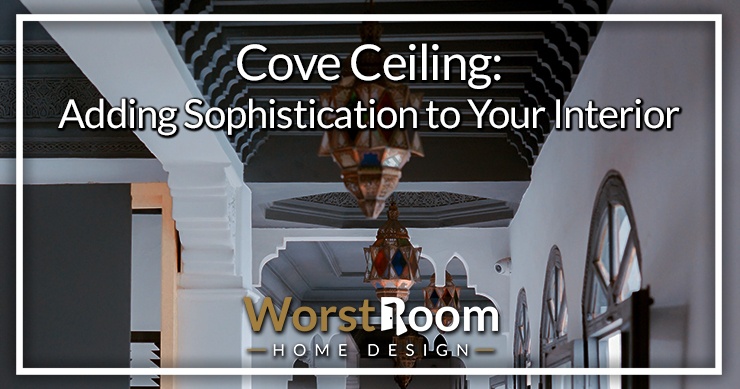
When it comes to the interior design of a house, ceilings are often overlooked as they're above eye level. But lucky for you, you won't be making the same mistake. A special type of ceiling called a cove ceiling is growing in popularity, and you must be wondering what it is.
In simple words, it's a curved ceiling that makes the top of your house look rounded instead of having sharp edges. You'll know all about cove ceilings and the different types of designs you can do with them in this guide.
We'll also discuss why you should consider installing cove types of ceilings in your house. Finally, you'll also learn some tips to make your house ceiling look attractive. We have a lot to unpack, so let's dive in!
What is a Cove Ceiling?
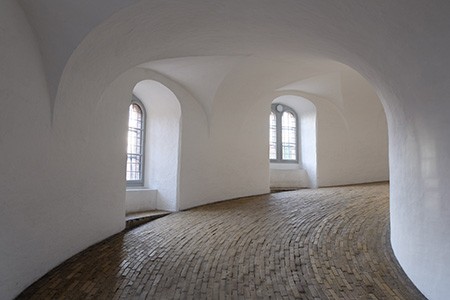
What is a coved ceiling, you may be asking. Have you ever seen a curved ceiling where the ceiling and the walls seem to meet together? If you have, you already know what cove ceilings are. While a normal ceiling has sharp angles and there are visible straight lines, cove ceilings are rounded and have a much softer look.
A cove ceiling eliminates the need for expensive crown molding. It's often the more budget-friendly option and adds elegance and luxury to your home. Coved ceilings were commonly seen when the labor cost was much cheaper, but they've started making a comeback over the last few years.
What is a cove ceiling? This style of ceiling is named after cove molding, where the molding has a rounded appearance. A traditional cove ceiling is completely rounded and feels absolutely seamless, soft, and natural. But the modern makeovers have made room for new designs that use other trims around the cove.
The additional molding creates a look of a coffered ceiling. It's normally painted in a contrasting color so that it stands out from the rest of the house. The look of curved molding is often created by installing curved mesh, plastering, and painting over it in modern cove ceiling constructions.
Cove ceilings made with plaster can be difficult to repair when the plaster fails. That's because the plaster may fall off in large pieces, and that'll make the overall structure of the plaster compromise its integrity. You can use solid wood molding to create a cove ceiling as well. But it'll be more expensive.
If you're interested in putting a cove ceiling in a room, you can expect it to take at least a week. You'd need metal contracting tape, plaster, tape, and paint to get started with it. Applying the plaster and sanding it down can cause a lot of dust. So, remove any furniture you have in the room when working on it. Do a very careful job so you aren't dealing with drywall tape separating from the ceiling later, because it's a pain to repair.
Cove Ceiling Design
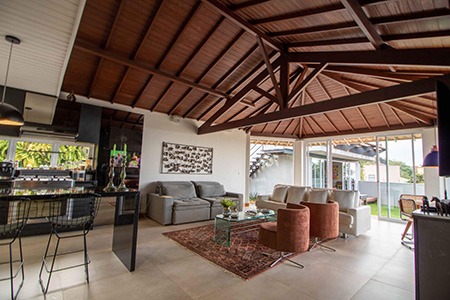
Even if you decide to install a cove ceiling in your home, there are still plenty of options for you. There are many cove ceiling designs that have been categorized into four groups. And when you select which type of design you want, there are endless options of paint. Let's look at the design types now.
Top Reveal Coving
The coving doesn't necessarily need to be seamless if you want to add a feel of luxury and timelessness to it. As you can gather from the name, the wall seems to flow into the ceiling, but then it meets with a sharp edge.
This edge stands out to the eye and gives the feeling that the ceiling is being lifted. You can achieve this look by simply adding another piece of wood to the ceiling. This process is called a fur down, and it instantly creates a nice architectural class for your room.
Bottom Reveal Coving
These coved ceilings have a similar design style to the top reveal coving, but it has the exact opposite visual effect. While the ceiling looks lifted in a top reveal coving, the curve looks cut off from the ceiling when it reaches the wall in case of a bottom reveal coving.
You can clearly separate the ceiling, and the wall with a bottom reveal coving. The wood is added here to the wall where the arch gets attached. You can add more molding to give it a nicer look. This can end up looking a lot like a tray ceiling with enough molding and other effects added.
If you want to enhance the design to the next level, a neat trick you can follow is to paint it a completely different color from the rest of the house. That'll make it stand out from all the other areas and draw more attention to itself.
Top & Bottom Reveal Coving
The coving with both top and bottom reveal adds a unique look to the house where the ceiling design becomes the main focus. As you may have already guessed, you can achieve this effect by creating an additional fur down to the wall and the ceiling where the pieces of the cove are attached.
The final look is similar to crown molding, but it looks way more exaggerated. It's one of the most popular cove ceiling designs. The installation method of such cove ceilings is easy as there's no need to remove any drywall. So, it's an ideal option for you even if you're on a budget.
No Reveal Coving
This type of cove ceiling comes to our mind first when we hear the term "cove ceiling." It's the seamless cove ceiling design that eliminates all the sharp edges and is well-rounded from all sides. It goes directly from the wall to the ceiling, and there are no obstructions in between.
Though this is the most common form of cove ceilings, it's also widely considered the most beautiful one as well. When installing this type of ceiling, you must blend it seamlessly with the wall. The end result is soft, rounded corners and a touch of elegance to the entire space.
Why Should You Consider Cove Ceilings?
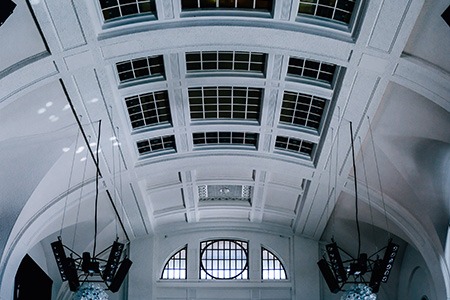
Are you still hesitating to decide whether cove ceilings are the right choice for you? In case you're not already sold on the idea of cove ceilings for your home, here are a few pointers to help you out.
Amazing Finish
Your ceiling will look excellent if you decide to get a cove ceiling. Their rounded and soft nature can leave anyone mesmerized. There are both traditional and modern-looking designs with cove ceilings. You can also add a fair deal of customization to these designs.
The design and painting options are endless. You won't have any shortage of design choices when you choose this type of ceiling. The curved design will add a nice appeal to your house that'll instantly separate it from the other houses in your neighborhood.
The beauty of cove ceilings is their biggest advantage, though if you end up with any types of ceiling cracks, dealing with their curved nature may require calling in a professional. Otherwise, with sanding you may end up creating an obvious spot that isn't smooth like the rest that line shines off of differently.
Easy & Cheap Installation
Installing a cove ceiling can be cheaper than crown molding. It's also much easier to install. If you're installing a ceiling during a remodel, it's a no-brainer that a coving with a top and bottom reveal is the most suitable option for you.
You can even look into a coffered ceiling for lower costs, which is basically faking out the depth of a cove by adding beams and painting them, or using drywall to create these upward indentions (by creating downward beams). You can get away for around $1,500 to $2,200 for a 12' x 12' room, depending on the extra decorative elements you desire.
How to Make Cove Ceilings Even More Attractive?
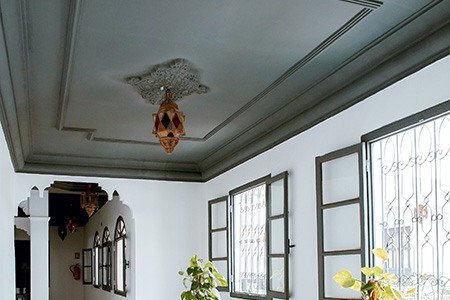
Use these cove ceiling ideas to help you boost their appearance. You can add several ornamental elements to take your ceiling game to the next level. But doing that can be expensive. But using the right paint can beautify your ceiling to a large degree.
The color choices for your ceiling are endless. Even though the color and look of the ceiling should always be based on your personal preferences, there are certain rules of color theory you can follow.
Contrasting Colors
By using contrasting colors to paint your ceiling, you can make it appealing and stand out from the rest. But, how can you achieve this look? You can paint either the ceiling or the wall a dark color and paint the other light color. The difference in the colors will instantly draw attention to them. You can also get creative with the ceiling texture types used on the flat portion of the ceiling.
Tone on Tone
If you don't want something strong, like using contrasting colors but still want a nice effect, you can go for a tone-on-tone painting style. Your walls and ceiling can be of the same color, but you can paint each of them using different shades of the same color.
It'll create a subtle difference in their colors and improve the overall look of your ceiling. The transition here will be soft and still, adding a great dimension to the look and feel of the ceiling.
Decorative Lighting
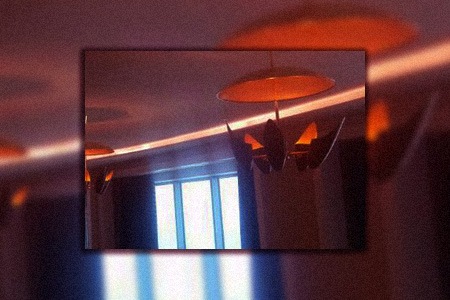
With LED strip lighting out there now among other types of ceiling lights, you can easily create a glowing cove ceiling by tucking these strips behind decorative types of crown molding strips around the borders of the ceiling. You can let the light shine up into the curved portion of the ceiling and let it bounce back down into the room, setting up an amazing atmosphere.
Cove Ceilings are Incredible & Sophisticated
Ceilings can add a lot of flair to your house if you get it right. Unfortunately, this is one of the things that most people get wrong. But you can't go wrong with your ceiling design if you choose a cove ceiling.
There are a lot of design and color choices for the cove ceiling. Design your ceiling the way you like it but use the tips mentioned in this article as a guide. Once you do the work and install it, the juice will be worth the squeeze as you'd have a beautiful ceiling to look at.



